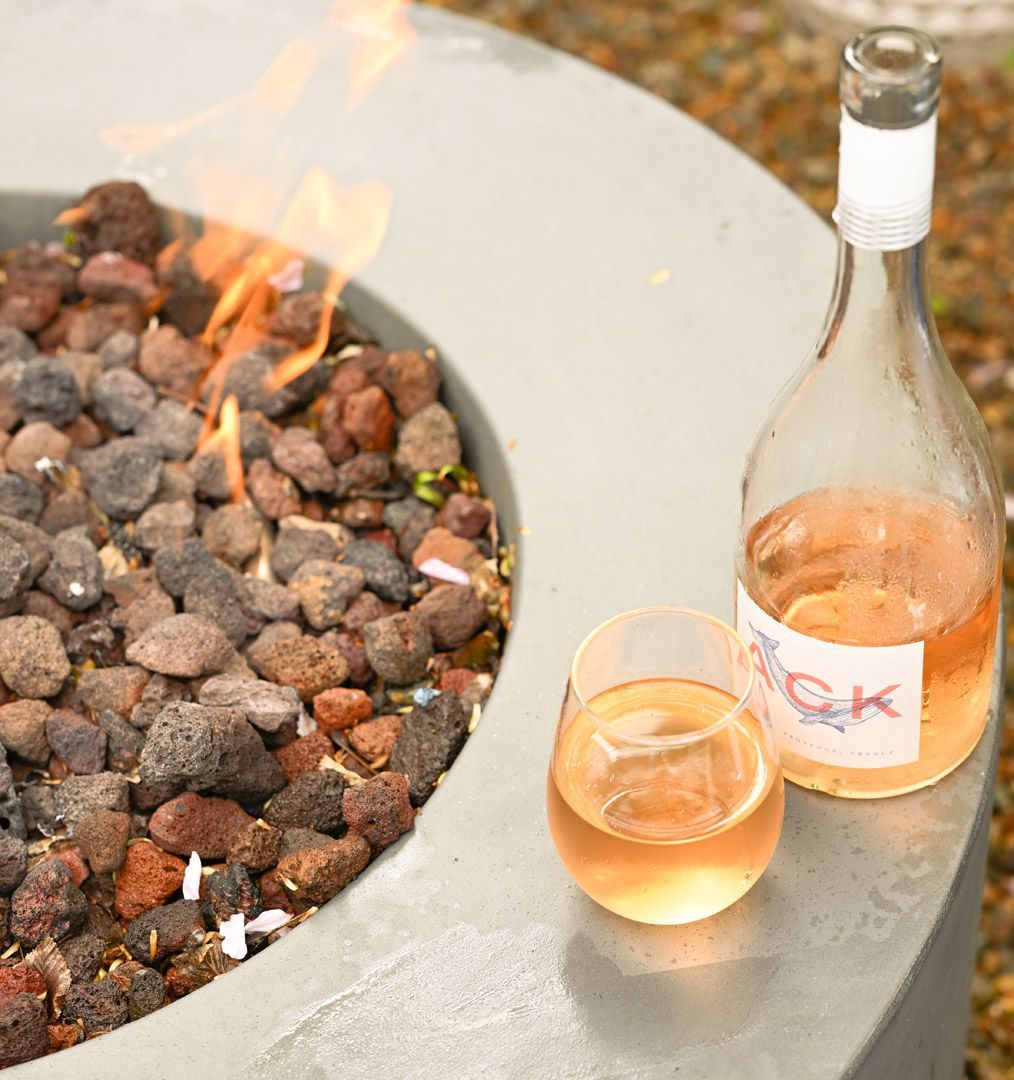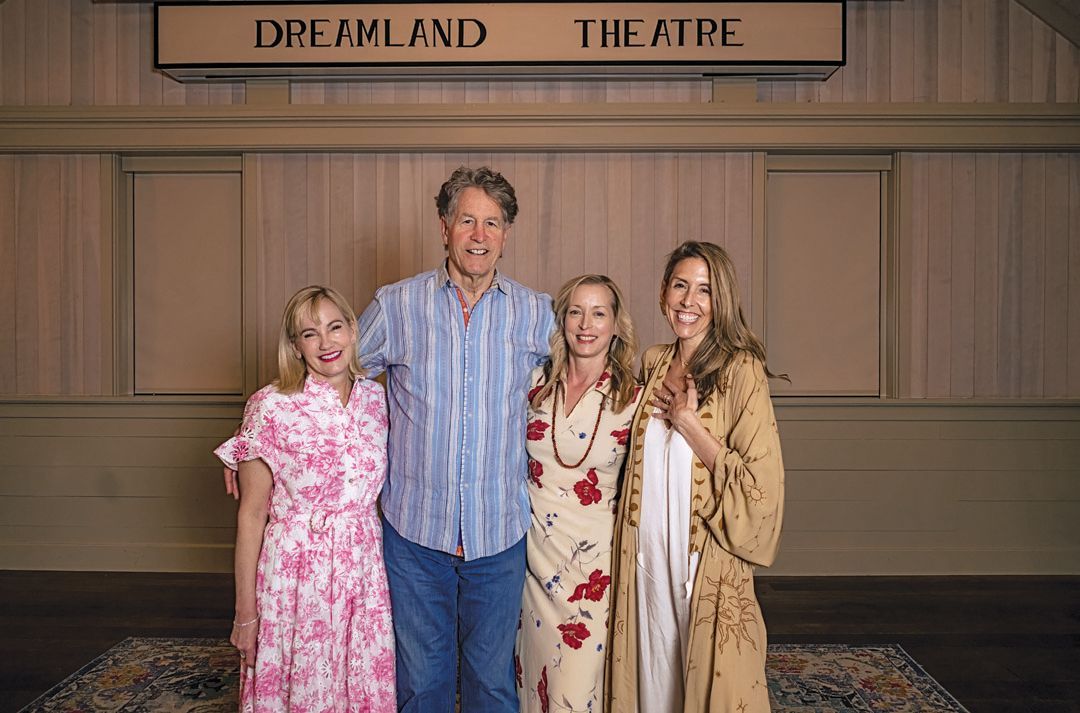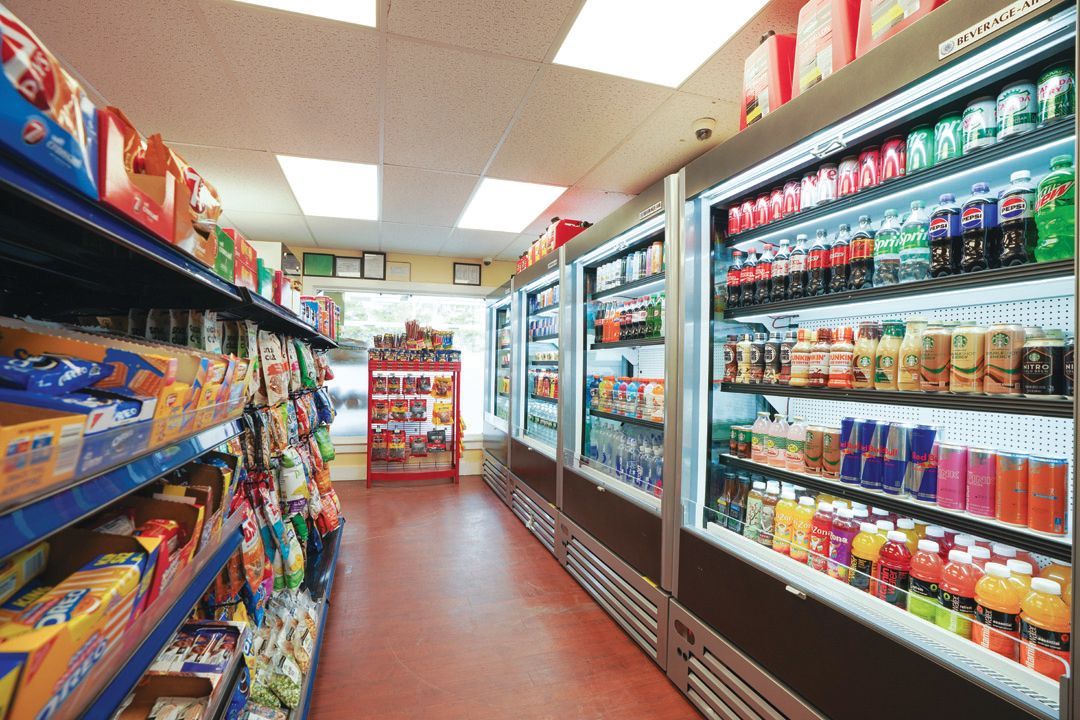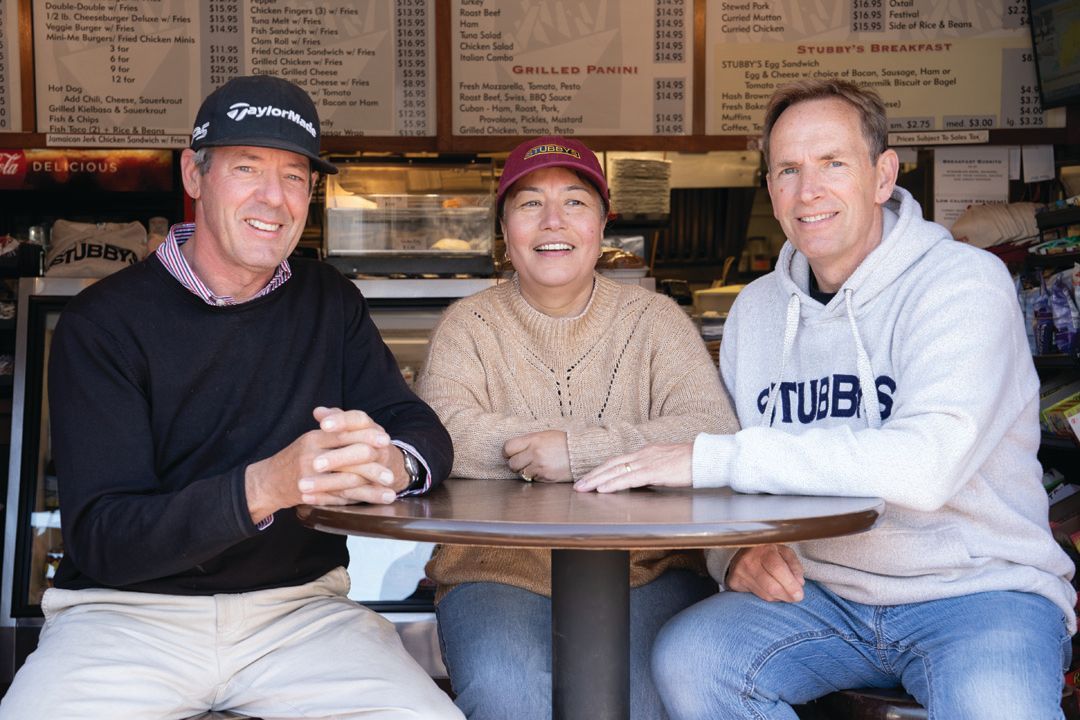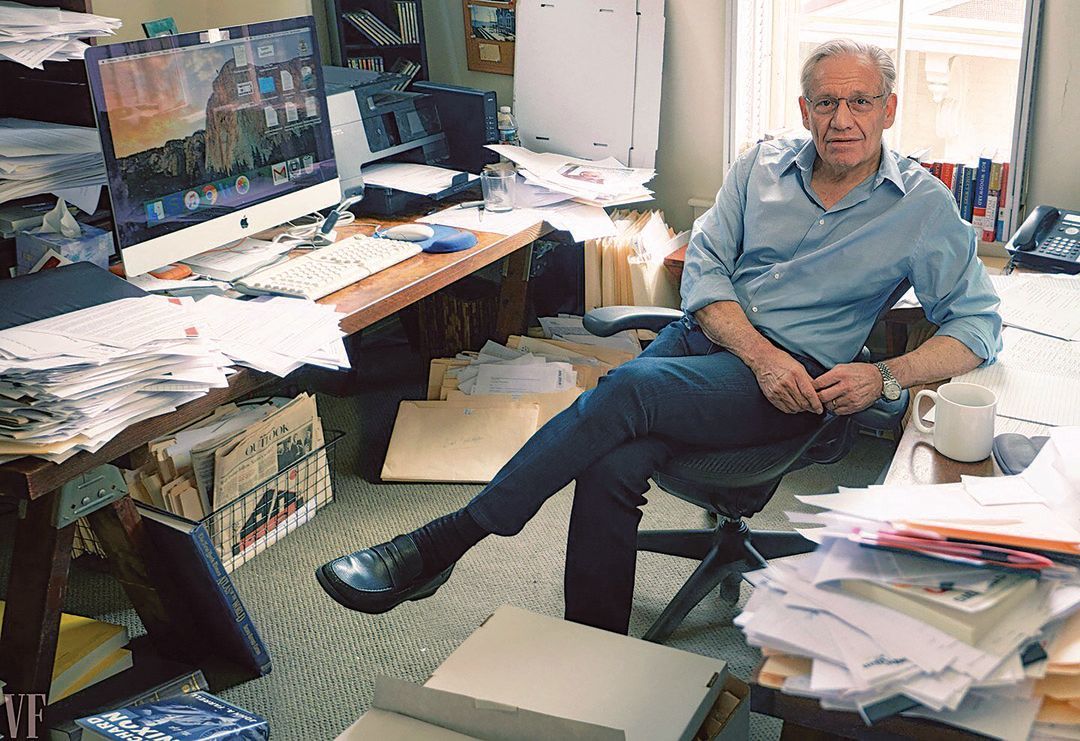In the Bag
One summer resident’s clutches are a work of art.
Written by Erin Saluti
Photography by Kit Noble
Twelve years ago, one of Erin Saluti’s accessories began turning heads. She was often seen sporting a curved wooden clutch that her husband made for her as a birthday gift based on a sketch she gave him. “I carried that thing all over the world, and wherever I went, someone asked about it,” said Saluti, a Nantucket summer resident. “They were shocked when I said that [we] had made it.”
Erin had sketched the design for the handbag and showed it to her husband, Joe Saluti, a partner at hedge fund Highline Capital Management who dabbled in woodworking in his spare time. He carved pieces of walnut on a curve with a computer-operated machine to bring Erin’s idea to life. He attached brass cabinet hardware to serve as the bag’s hinges.
Then, during the COVID-19 pandemic, Joe’s woodworking hobby kicked into high gear. He moved his CNC machine to their family’s garage in Westchester, New York, raising the ceiling so it would fit. Erin gave designing another bag a whirl, and then another one. “We were stuck at home and I just kind of kept going,” she said. This marked the beginning of what’s now known as Eittem (pronounced item), Saluti’s luxe collection of sculptural wooden handbags
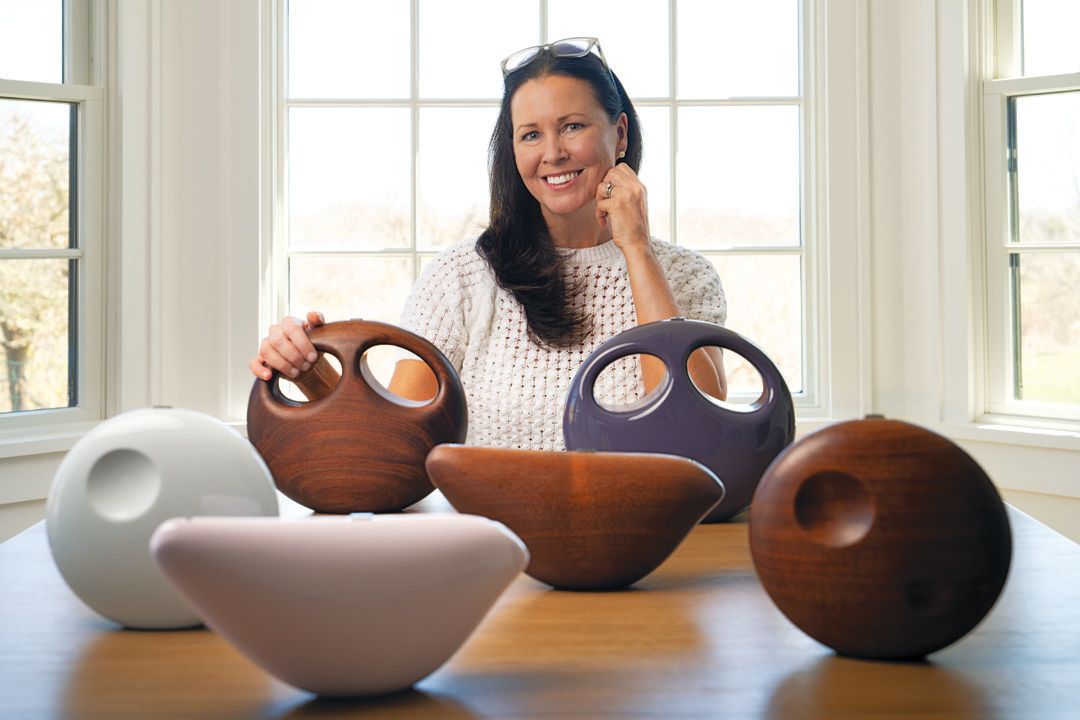
In those early days, Erin, who studied contemporary art and design at the Victoria and Albert Museum in London and interior design at London Design School, designed and prototyped all of the bags at home with Joe, and increased production once pandemic-related supply chain issues subsided. In the spring of 2024, they moved the business toa studio in Manhattan’s Chelsea neighborhood, perfecting the process of creating Eittem’s three hallmark designs.
Bags like Eittem—which start at $5,800 and go up to $7,800—maybe more than just a place to hold your belongings, but may also bean investment and a future collectable. Birkin bags, for example, often start above $30,000, while Nantucket Lightship Baskets can be just as valuable. Eittem’s signature forms, named Owl, Moon and Bird, recall themes from natural environments. “One of my favorite places on Nantucket is Tupancy Links,” Erin said. “Doing those hikes and looking at all the flowers, birds, deer and turtles—there and in our yard—those are the things that really inspire me."
To settle on each design, Saluti considered shapes that meant something to her. She loves owls, particularly snowy owls on Nantucket, and other organic forms that could translate into minimal, three-dimensional objects. “[The designs] resonate with people inmany different ways,” Saluti said. “But they’re shapes that I happen to like personally; that’s where it starts from.”
Each of the bags is available in a classic wood grain finish, plus two of their own colorways. The Owl comes in black and plum, the Bird in lilac and berry, and the Moon in pale blue and pearl. These colorful finishes are applied much like the top coat to an electric guitar or a new car. Finishing them requires a 20-stepprocess that involves sanding, hand-painting and buffing. Then, a craftsperson applies a unique protective coating that cures in a custom-built ultraviolet light chamber.
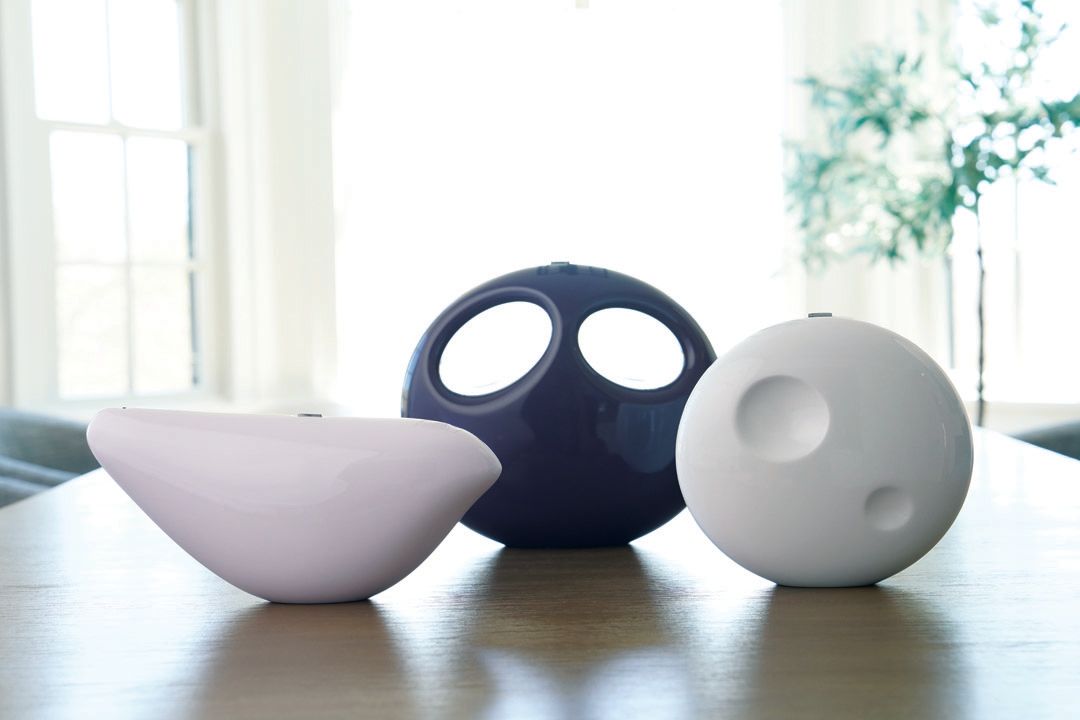
From the start, Saluti was set on crafting bags from walnut. “I just love the grain, the richness and the character of it,” she said. Eittem receives its walnut from urban salvage—in other words, reclaimed wood from trees that have fallen or were cutdown in places like city parks. The leather lining on the inside, meanwhile, is sourced from a company in Germany called Weinheimer Leder, one of the major suppliers to Hermès. And the hinges have come a long way from Home Depot’s offerings. Now, they’re made of stainless steel.
“Most handbags, even the most expensive ones, just use brass, which is inexpensive and not very strong,” Saluti explained. “I wanted to try making our hardware out of stainless steel, which is super strong and can be polished beautifully to this gorgeous shine. It really looks like jewelry.”
“They’re really a hybrid of art and a fashion accessory,” Saluti said. Flouting traditional luxury purse designs, there’s no exterior logo on any of the bags—only a small embossed “Eittem” on the inside of the clasp. “We really want the shapes themselves to become the indicator of the brand and, over time, what people will recognize,” she said.

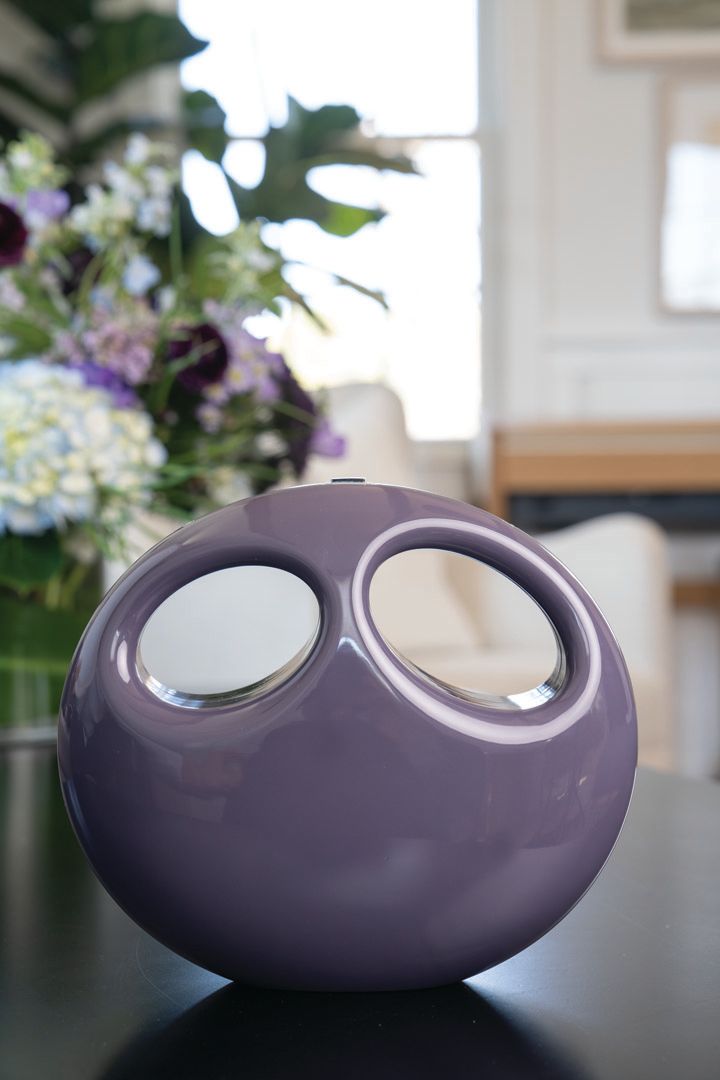
Each clutch takes at least two weeks to craft from start to finish. A series of artists and technicians work on each bag, and roughly four to five bags are in the production process at once.“ Similar to Nantucket lightship baskets, they take a lot of time to make each of them,” Saluti said.
A bag begins with a hand sketch, which is converted into a computer-assisted design, or CAD, drawing. Next, salvaged walnut is carved with the CNC machine according to the CAD drawing. The wooden shells are then hand-sanded and rested on a shelf for several days, allowing the wood to expand and contract before assembly. From there, it receives a finish, either natural wood grain or a paint color, such as lilac or black, depending on the bag’s shape. At the same time, the leather interior is uniquely wet-molded and dried in the kind of incubator that’s typically used to grow bacteria, rather than being sewn into the bag. “No bacteria is involved in our process,” Saluti noted. “We adopted it from the medical industry as the temperature can be finely adjusted.”
In fact, a variety of the machines and tools in Eittem’s Chelsea workshop are repurposed from other fields. An optical comparator from a machine shop helps fine-tune a bag’s clasps, while dental tools and jeweler’s instruments bring the stainless steel portions—17 pieces per bag—to a mirror finish. From there, each clutch undergoes assembly and, finally, a personal inspection from Saluti. Due to the small size of Eittem’s production facility and team, they’ve only produced about40 of each of the three hallmark shapes in total.
Saluti estimates the company will make roughly 200 bags in all of 2025. That’s because she endeavors to work similarly to an art model: Each bag is numbered, much like a work of art, and a card of authenticity signed by the people who handmade the bags is tucked inside the product. As for future clutches? Three additional shapes have been prototyped, while two more are in sketch form, Saluti said. The plan is to release one new shape per year. While those designs are under wraps for now, Saluti hinted at a local source of inspiration for a bag she might create one day: “I would love to do something that ties in a lightship basket element.

